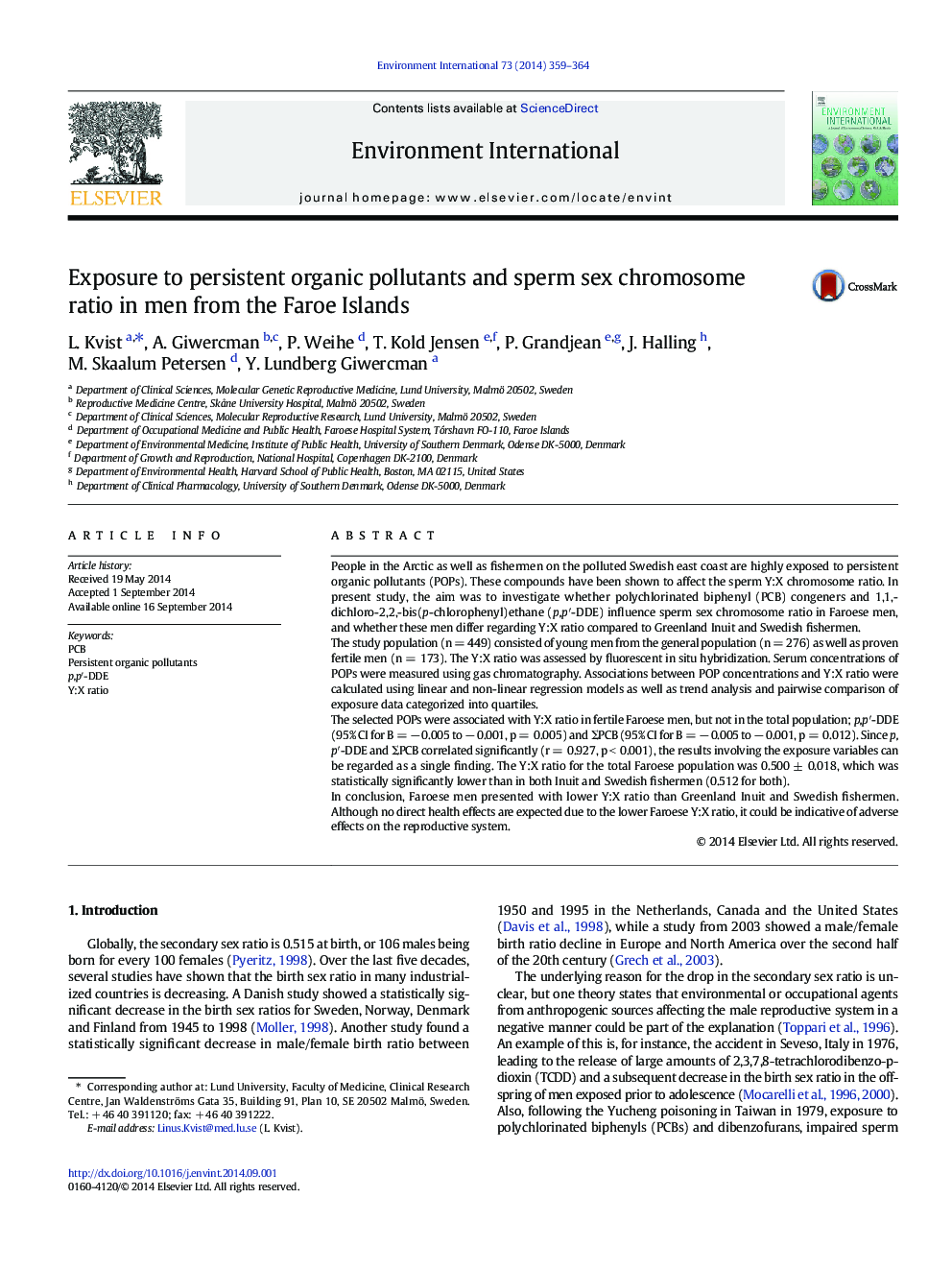| کد مقاله | کد نشریه | سال انتشار | مقاله انگلیسی | نسخه تمام متن |
|---|---|---|---|---|
| 6313842 | 1619055 | 2014 | 6 صفحه PDF | دانلود رایگان |
- The people on the Faroe Islands are highly exposed to environmental contaminants.
- These compounds may affect sperm sex chromosome ratio.
- Y:X ratio was negatively associated with environmental contaminants in fertile men.
- Faroese Y:X ratio was lower than in similarly exposed Swedes and Greenland Inuit.
People in the Arctic as well as fishermen on the polluted Swedish east coast are highly exposed to persistent organic pollutants (POPs). These compounds have been shown to affect the sperm Y:X chromosome ratio. In present study, the aim was to investigate whether polychlorinated biphenyl (PCB) congeners and 1,1,-dichloro-2,2,-bis(p-chlorophenyl)ethane (p,pâ²-DDE) influence sperm sex chromosome ratio in Faroese men, and whether these men differ regarding Y:X ratio compared to Greenland Inuit and Swedish fishermen.The study population (n = 449) consisted of young men from the general population (n = 276) as well as proven fertile men (n = 173). The Y:X ratio was assessed by fluorescent in situ hybridization. Serum concentrations of POPs were measured using gas chromatography. Associations between POP concentrations and Y:X ratio were calculated using linear and non-linear regression models as well as trend analysis and pairwise comparison of exposure data categorized into quartiles.The selected POPs were associated with Y:X ratio in fertile Faroese men, but not in the total population; p,pâ²-DDE (95% CI for B = â 0.005 to â 0.001, p = 0.005) and ΣPCB (95% CI for B = â 0.005 to â 0.001, p = 0.012). Since p,pâ²-DDE and ΣPCB correlated significantly (r = 0.927, p < 0.001), the results involving the exposure variables can be regarded as a single finding. The Y:X ratio for the total Faroese population was 0.500 ± 0.018, which was statistically significantly lower than in both Inuit and Swedish fishermen (0.512 for both).In conclusion, Faroese men presented with lower Y:X ratio than Greenland Inuit and Swedish fishermen. Although no direct health effects are expected due to the lower Faroese Y:X ratio, it could be indicative of adverse effects on the reproductive system.
Journal: Environment International - Volume 73, December 2014, Pages 359-364
